- The method in the OP works, but isn't efficient. It may have seemed to run forever, because the dataset was long.
- Use
.groupby on the 'method' column, and create a dict of DataFrames with unique 'method' values as the keys, with a dict-comprehension.
.groupby returns a groupby object, that contains information about the groups, where g is the unique value in 'method' for each group, and d is the DataFrame for that group.
- The
value of each key in df_dict, will be a DataFrame, which can be accessed in the standard way, df_dict['key'].
- The original question wanted a
list of DataFrames, which can be done with a list-comprehension
df_list = [d for _, d in df.groupby('method')]
import pandas as pd
import seaborn as sns # for test dataset
# load data for example
df = sns.load_dataset('planets')
# display(df.head())
method number orbital_period mass distance year
0 Radial Velocity 1 269.300 7.10 77.40 2006
1 Radial Velocity 1 874.774 2.21 56.95 2008
2 Radial Velocity 1 763.000 2.60 19.84 2011
3 Radial Velocity 1 326.030 19.40 110.62 2007
4 Radial Velocity 1 516.220 10.50 119.47 2009
# Using a dict-comprehension, the unique 'method' value will be the key
df_dict = {g: d for g, d in df.groupby('method')}
print(df_dict.keys())
[out]:
dict_keys(['Astrometry', 'Eclipse Timing Variations', 'Imaging', 'Microlensing', 'Orbital Brightness Modulation', 'Pulsar Timing', 'Pulsation Timing Variations', 'Radial Velocity', 'Transit', 'Transit Timing Variations'])
# or a specific name for the key, using enumerate (e.g. df1, df2, etc.)
df_dict = {f'df{i}': d for i, (g, d) in enumerate(df.groupby('method'))}
print(df_dict.keys())
[out]:
dict_keys(['df0', 'df1', 'df2', 'df3', 'df4', 'df5', 'df6', 'df7', 'df8', 'df9'])
df_dict['df1].head(3) or df_dict['Astrometry'].head(3)- There are only 2 in this group
method number orbital_period mass distance year
113 Astrometry 1 246.36 NaN 20.77 2013
537 Astrometry 1 1016.00 NaN 14.98 2010
df_dict['df2].head(3) or df_dict['Eclipse Timing Variations'].head(3)
method number orbital_period mass distance year
32 Eclipse Timing Variations 1 10220.0 6.05 NaN 2009
37 Eclipse Timing Variations 2 5767.0 NaN 130.72 2008
38 Eclipse Timing Variations 2 3321.0 NaN 130.72 2008
df_dict['df3].head(3) or df_dict['Imaging'].head(3)
method number orbital_period mass distance year
29 Imaging 1 NaN NaN 45.52 2005
30 Imaging 1 NaN NaN 165.00 2007
31 Imaging 1 NaN NaN 140.00 2004
- For more information about the seaborn datasets
Alternatively
- This is a manual method to create separate
DataFrames using pandas: Boolean Indexing
- This is similar to the accepted answer, but
.loc is not required.
- This is an acceptable method for creating a couple extra
DataFrames.
- The pythonic way to create multiple objects, is by placing them in a container (e.g.
dict, list, generator, etc.), as shown above.
df1 = df[df.method == 'Astrometry']
df2 = df[df.method == 'Eclipse Timing Variations']
